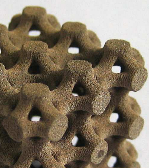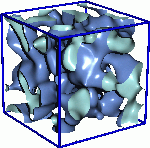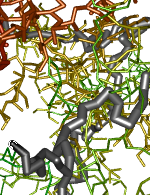 Optimized bone implant
Optimized bone implant
Dr Roberts did an Honours degree in Science (Mathematics) at the University of Queensland (1991), and undertook his doctoral studies at the Australian National University (PhD, 1996). From 1997-2002 he was a post-doctoral fellow at Oxford, a Fulbright fellow at Princeton University and the National Institute of Standards and Technology (USA), and an Australian Research Council postdoctoral fellow at UQ. He was a lecturer at the Queensland University of Technology (2003-2004), before taking up a senior lecturing position in the Mathematics department at UQ.

Model random materials
 Diffusion on networks
Diffusion on networks
Dr Roberts' research is focussed on role that the microstructure plays in determining the interesting and important properties of natural and manufactured materials. His research fields in applied mathematics include probability theory, contiuum mechanics, electrostatic and diffusive transport, and topology optimization. He has studied the properties of a wide range of materials including; binary alloys, polymers, aerogels, porous ceramics, network models, aggregates, gas barrier films and fractals. Recently he has been studying the design of optimal bone implants and diffusion on networks.
-
Topology Optimization: Design of artificial bone implants
-
Models of random structures: Gaussian random fields, 3D Poisson models, percolation models, diffusion limited aggregation, fractal networks and trees
-
Material Properties: conductivity/resistivity, diffusion coeffcients, anomalous diffusion, elastic properties, fluid flow, random walker probabilities
- Analysis of experimental techniques: Statistical reconstruction of 3D models from 2D images; Small angle neutron and x-ray scattering
Projects for PhD, Masters and Undergraduate students
- Optimising bone implant stucture subject to constraints and multiple-objective functions
- Random walks/Diffusion on networks. Application to complex networks
- Simulation of random walks on complex networks (suitable for an undergraduate student with an interest in coding)